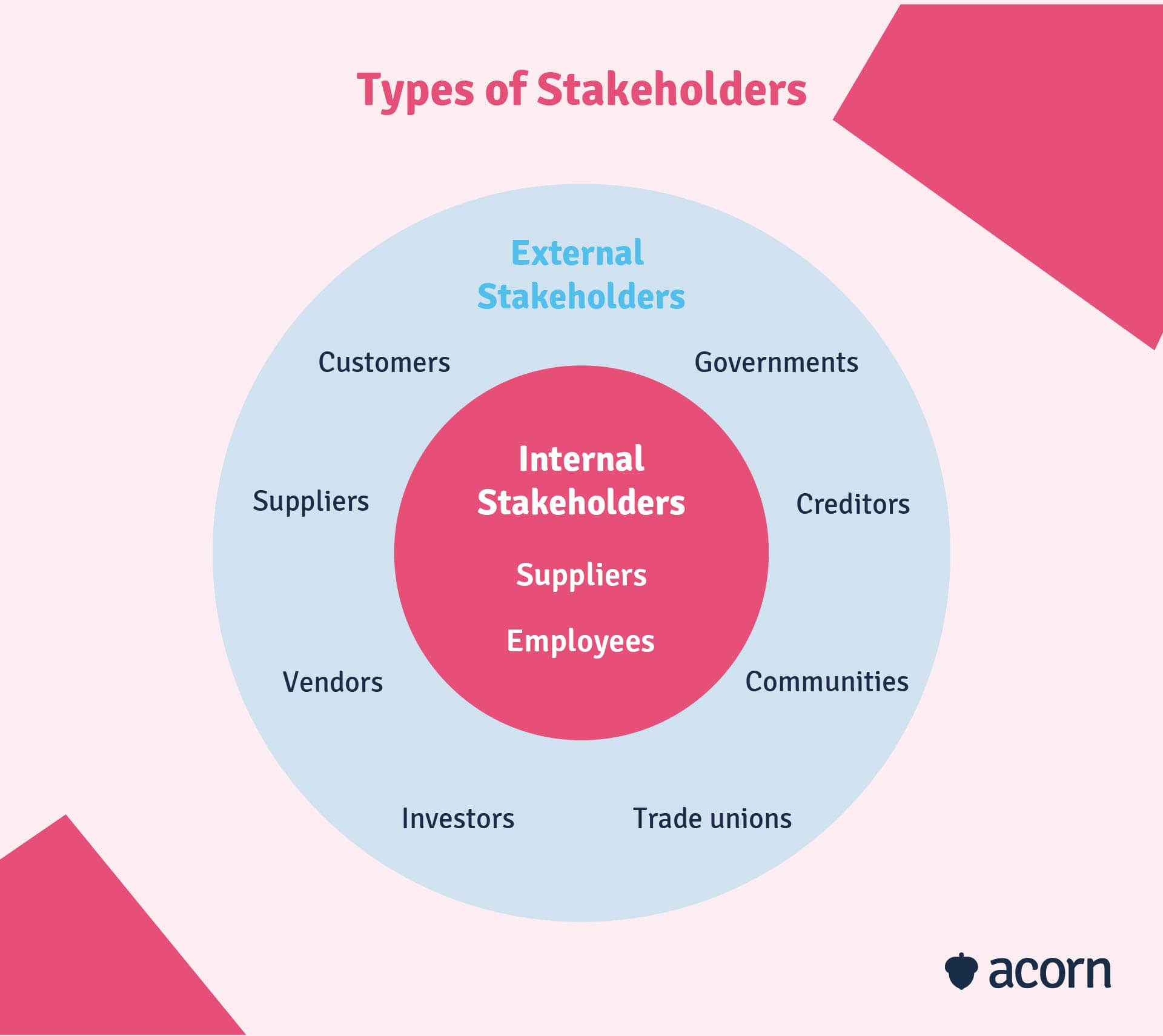Stakeholder Identification and Analysis: What it is and Why You Need it in Workforce Planning
So, you’re about to get started with workforce planning. As project manager, you need to gather the necessary stakeholders to collaborate on the best course of action. What is your strategic direction? How are you going to achieve your desired organisational outcomes? What will you need to change to reach those outcomes?
But how do you gather all the relevant stakeholders if you don’t know who they are or why they’re relevant? In this article we’ll explain everything you need to know about performing a stakeholder identification and analysis and why it’s an important process for your workforce planning.
What is a stakeholder?
A stakeholder is a term used to define an individual, group, or organisation that has an interest in something such as a business, business decision, or project. They are people or small groups with the ability to affect or be affected by the business or project. Stakeholders may include purchasers, suppliers, clients, and owners.
What is stakeholder identification and analysis?
Stakeholder identification is distinguishing which parties are classified as stakeholders in a project, either because they can influence the project or because they are directly affected by the result. A stakeholder analysis is the process of identifying who the key stakeholders are before the project commences.
What is the purpose of a stakeholder analysis?
Imagine you’re hosting a dinner party for your friends. You wouldn’t ask your extended family for their dietary requirements in preparation for the dinner, would you? Of course not. You would, however, spend the time to ask each of your invited friends, because they’re the people who will be eating the food.
This is all to say that the purpose of a stakeholder analysis is to ensure you identify the stakeholders who have a vested interest in the project at hand. And that you identify within that group the collaborators who have the most concern in the project at hand.
Why is stakeholder identification and analysis important in workforce planning?
Working with groups who have a stake in your business means that they have a reason to care about the goals set out in your workforce planning and the methods you use to reach them.
Gaining stakeholder buy-in means you can collaborate on a goal or outcome that is most beneficial both to your organisation as a whole and to your stakeholders themselves. On top of this, the information provided by your project stakeholders is invaluable to understanding the best course of action when establishing successful solutions to reach your desired outcomes.
Of course, it’s not as simple as gathering all your interested parties into one room and asking them to help brainstorm ideas. Remember the dinner party? We’ll get into how to identify and analyse the most important collaborators for your workforce planning below.
How do you identify stakeholders?
You already know what a stakeholder is in the broad sense, but now it’s time to delve a little deeper. This means it’s time to look at what people, groups or parties are considered to be a type of stakeholder, and those types are. Identifying stakeholders is a big part of stakeholder analysis, and we’ll get into how to perform a stakeholder identification below.
Understanding stakeholder categories
The first step in stakeholder management is understanding the different stakeholder categories as they pertain to workforce planning. There are many different types of stakeholders who may have interests in your business and its decisions, some of them from within your organisation and many from outside it. Generally, the different types of stakeholders you may come across will fall under three categories. This means that each type of stakeholder will be a combination of:
- Internal or external
- Primary or secondary
- Direct or indirect.
So, what defines these categories, and which types of stakeholders fall under each one?
Internal and external stakeholders for workforce planning
These are stakeholders who are internal or external in relation to your business. An internal stakeholder is someone from within your organisation, such as employees or owners. On the other hand, an external stakeholder is someone from outside your organisation, such as a supplier.

Primary and secondary stakeholders for workforce planning
Primary stakeholders are those who have a key concern in the business or the outcome of the project. Their level of interest is usually high because they have direct involvement in the outcome of the project and actively contribute to it. A secondary stakeholder is someone who participates in financial and administrative matters. While they also have a part in completing projects, their efforts are less influential.
Direct and indirect stakeholders for workforce planning
Direct and indirect stakeholders are interested in the process of the outcome, from the making of to the end result. Direct stakeholders are involved in the creation process, often having a hand in the routine tasks of the project, whereas indirect collaborators are focused on the final outcome of the project. An employee involved in the making of the project would be considered a direct stakeholder, while a consumer would be an indirect stakeholder as their interest lies in the final product.
Understanding stakeholder types in WFP
Next, you need to understand stakeholder types. There are some common types of stakeholders that you’re most likely to come across when trying to identify them for your business projects. These stakeholder types are:
- Customers
- Owners
- Employees
- Investors
- Suppliers and vendors
- Trade unions
- Communities
- Creditors
- Governments.
As we mentioned before, each type of stakeholder falls under three categories. Therefore, what categories do these stakeholder types fall under, and what interest do these groups have in the business to make them stakeholders?
Customers
Customers are stakeholders of the business, and a business can’t get far without its customers. Even public sector organisations have customer, citizens. They have an interest in how the business performs and operates because they buy the products the organisation produces directly.
Meeting the needs and demands of the customer is extremely important if you want your organisation to continue to sell and make profit, and thus customers are among some of the more important stakeholders in your business.
Customers are:
- External
- Primary
- Direct.
Owners
These are the people who own the organisation, and who have a say in decision-making and the day-to-day running of the business.
Owners are:
- Internal
- Primary
- Direct.
Employees
Employees are the people who work for the organisation, and often work directly on the project and with the customers. They want the business to be successful because they work within it and earn money for their work. Employees can include managers or be listed as separate teams such as sales, finance and development.
Employees are:
- Internal
- Primary
- Direct.
Investors
Investors are groups outside the business who put money into the organisation with the expectation of returns. They expect to see regular and accurate information on finances and can influence major financial decisions. Investors are also able to contribute ideas regarding business goals and strategies.
Investors are:
- External
- Primary
- Direct.
Suppliers and vendors
Suppliers are people, groups or businesses outside of your organisation who sell goods and services to you. The patronage of your organisation is important to them because they rely on your buying of their goods and services to earn a profit. Suppliers will also often be concerned with safety, as their products can have an impact on your organisation’s operations.
Suppliers and vendors are:
- External
- Secondary
- Indirect.
Trade unions
Unions are organised groups of workers within an industry who have the interests of the workers at heart. Their interests can include improvements to pay, working conditions, or benefits. A lot of organisations have a connection with trade unions as they have a stake in the interests of the organisation’s employees.
Trade unions are:
- External
- Secondary
- Indirect.
Communities
The community your business operates in can be considered a stakeholder. Your organisation can affect the economy of a community as well as its employment prospects.
Communities are:
- External
- Secondary
- Indirect.
Creditors
A creditor lends money to a business rather than investing, such as a bank. They differ from investors in that they get paid back from the sales made of goods and services produced by your organisation. Plus, if an organisation were to fall apart, creditors get paid back.
Creditors are:
- External
- Secondary
- Indirect.
Governments
Governments collect taxes from businesses and its employees. For this reason, a government agency can also be considered a stakeholder in a sense.
Governments are:
- External
- Secondary
- Indirect.
How do you perform a stakeholder identification and analysis?
You know what the different types of stakeholders are and what categories they fall under. All you need to understand now is how to utilise this information to perform a stakeholder identification and analysis for your workforce planning.
There are three simple steps to performing a stakeholder identification and analysis. Let’s get into them below.
Step 1: Identify stakeholders
The first step in stakeholder analysis is to identify all potential collaborators. Think about what we discussed above about the different stakeholder categories and types. What parties from within your organisation might have an interest in how your project plays out? What external parties might have an interest in your project? Brainstorm who these parties might be. Don’t worry if your list is a long one—you can cut it down later.
Consider the specific people who might fall under the stakeholder types. The employee type is a broad one, so it might be more helpful to list the specific employees or groups of employees who classify as stakeholders under this type such as your project team, project management, developers and marketing.
Step 2: Prioritise stakeholders
Let’s go back to that dinner party with friends again. Say you have a friend who is only able to stay for the main course. In this case, you would hardly ask them for their dessert preferences. Instead, it would be much more conducive to ask the preferences of the guests who will actually be eating the dessert. This is called prioritising.
Prioritise your stakeholders in terms of who has the most interest, influence and involvement in the project at hand. In terms of your dinner party, the guest who can only stay for the main meal has a low interest in the dessert, but you have the most influence over the dinner as a whole. It can be confusing to keep it all straight, so if you’d prefer a visual representation of how all your stakeholders should be prioritised, you can always use a power-interest grid.
The power-interest grid organises groups of stakeholders into four classifications based on a combination of power and participation in a project.

- Collaborators: These are the people with high-interest and high-power in a project. They will be the ones you will collaborate with the most, and who should be engaged throughout the project.
- Advisors: These stakeholders have a high-interest but low-power involvement in the project. They can’t influence the project itself due to their low power, but they can provide input, insights and ideas.
- Influencers: High-power, low-interest individuals are influencers. They can have influence over the project, but while you should keep them informed, in general they don’t have the interest to be involved directly.
- Crowd: The crowd consists of low-interest, low-power stakeholders. You just need to make sure this group is kept informed of the project’s progress.
Step 3: Communicate with stakeholders
Now that you’ve prioritised the backers of your project in terms of interest and power levels within the project, you need to work out how you’re going to establish their ongoing support in your strategic workforce planning. Your stakeholders all have stakes in your organisation for different reasons, and that in turn will affect their priorities for your business. You need to work out:
- Why is this individual a stakeholder in your business? What motivates them?
- What are their priorities and how can you align those priorities with your project?
- Is this stakeholder likely to support your project, and if not, how will you address that?
Once you’ve answered these questions, you’re ready to collaborate with stakeholders on your project.
And while we’re on the subject of communicating with stakeholders, you need to know how you’re going to get them up to speed on your project. This is where a performance learning management system (PLMS) can help. It’s a dynamic AI-powered tool that can manage and set learning for both internal and external stakeholders, codifying and operationalising capabilities for organisational efficiency.
Key takeaways
Working out which stakeholders to include in your strategic workforce planning doesn’t have to be an overwhelming or complicated process. If you know how to perform a stakeholder identification and analysis, the process becomes much simpler. Plus, it will ensure that the stakeholders you collaborate with have a particular vested interest in your workforce planning project and will do what they can to help you succeed.
Related Reads on This Topic

How an Inability to Get Buy-In from Business Unit Managers Affects Organisational Capability Building
The buy-in of your business unit managers is essential to affecting change within your organisation. Read more to find out how it does this…

How to Manage Organisational Resistance to Change When Building Organisational Capability Programs
Managing resistance is all about change management. Discover how to gain workforce buy-in through cultural change when building capability…

Why Learning Needs to be Co-Owned by HR and Business Units When Building Organisational Capability
Learn how learning co-ownership between HR and business units is the first step to building organisational capability…